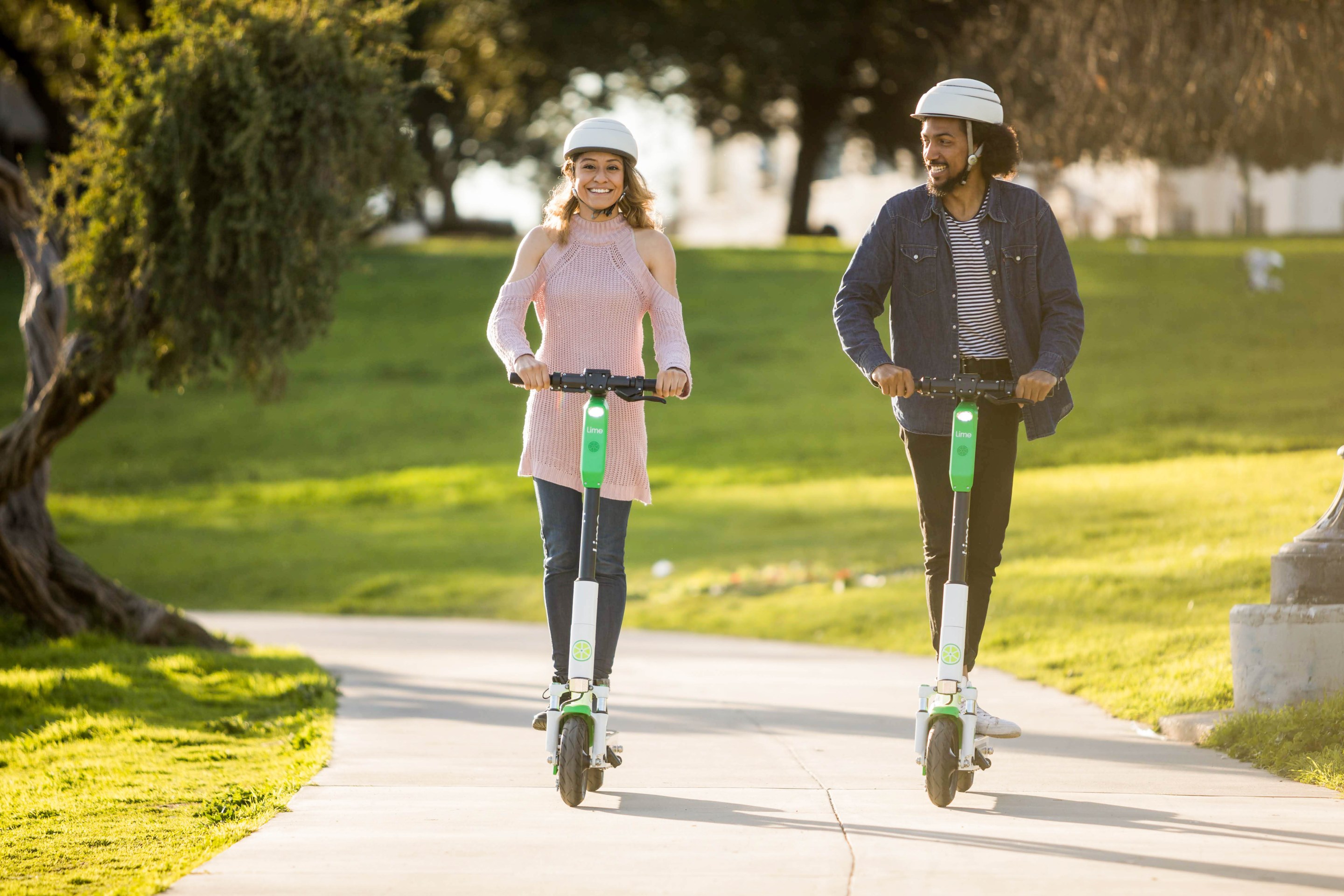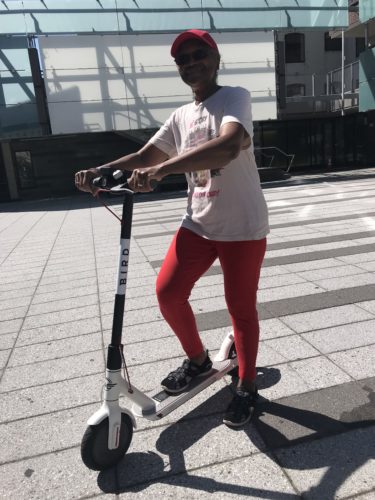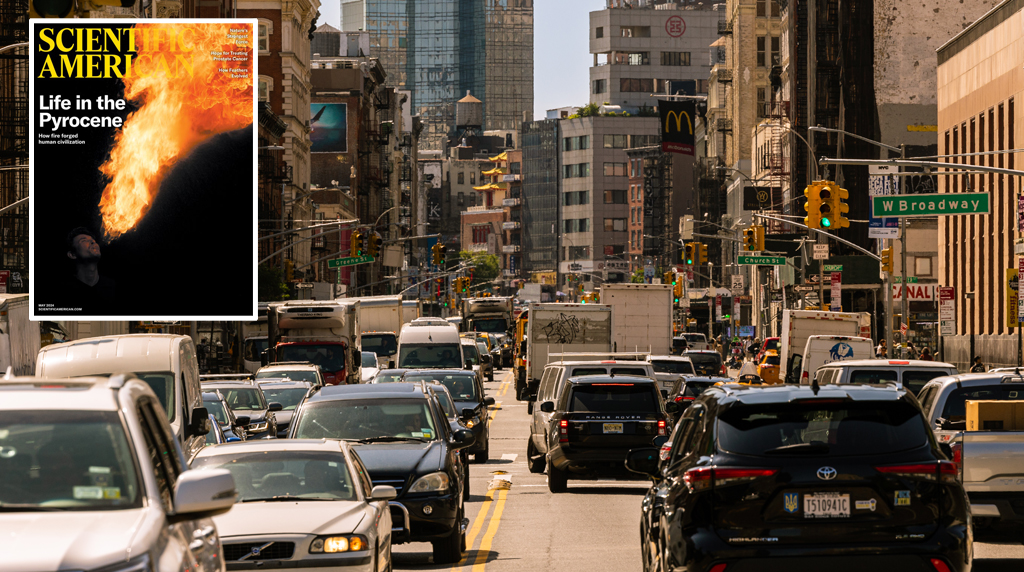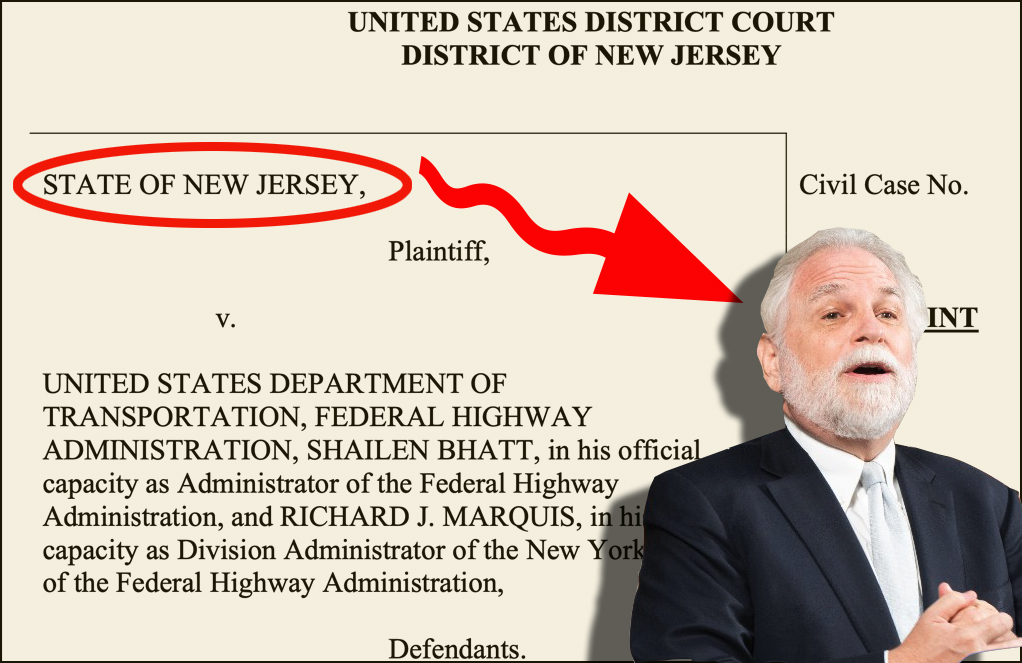Scooter Injuries Revealed! New Report Shows (Again!) the Need for More Protected Space for Two-Wheelers
12:01 AM EDT on October 15, 2020

Riders using Lime scooter. Photo: Kris Krug
Riders of e-scooters are more likely to injure themselves by riding on the sidewalk than get injured by a car driver in the road, a new report reveals — but that fact only emphasizes the need for more protected roadway infrastructure for micro-mobility users at the expense of car drivers.
The report by the Insurance Institute — which is entirely financed by the car insurance industry (though that sometimes has positive ramifications, as when the Institute slammed SUVs earlier this year) — wants to be read as an attempt to curtail scooter use by casting aspersions on their safety in cities, given that most scooter riders are injured when riding on the sidewalk (whereas most cyclists are injured by car drivers).
“We didn’t see many e-scooter crashes with motor vehicles, and that may be a result of riders sticking mostly to the sidewalk [which raises] legitimate concerns that sidewalk riders could crash into pedestrians,” Jessica Cicchino, the IIHS vice president for research, said in a statement.
Then again, there's another way to read the report: as an argument for reducing space allotted for cars in our cities.
Nearly three out of five e-scooter riders — 58 percent — were injured riding on the sidewalk (where scooter riding is generally prohibited) yet only one out of five was injured riding in a bike lane. And the 23 percent of e-scooter riders who were hurt riding in motor vehicle lanes tended to suffer more serious injuries than those hurt riding on sidewalks, bike lanes or multiuse trails. (The Insurance Institute report follows similar findings earlier this year by the Journal of the American Medical Association, as reported by Streetsblog. And much of the findings need to be taken with a shaker of salt: Roughly two-thirds of injuries stem from potholes, uneven pavement, driveway lips or other things that could be fixed with little controversy or wholesale reimagining of our cities.)
Nonetheless, there is one overarching implication of the report? Scooter riders are forced onto the sidewalk by unsafe road conditions — and that's where they are likely to injure themselves or others. But scooter riders who were given safe infrastructure — such as a protected bike lane — are rarely injured.
“We used the bike lane when one was available, but I personally don’t feel safe riding a scooter in the middle of traffic,” said 23-year-old Kavita Kothari, one of the 105 injured scooter riders interviewed by Institute researchers at at George Washington University Hospital in Washington, D.C., between March and November 2019.
"Sidewalk riding is a survival strategy," said Paul Steely White, director of Development and Public Affairs for Superpedestrian, which runs Link, a scooter company that hopes to set up a scooter-share system in New York next year. "Still, there's really no excuse for it because as we all know, pedestrians deserve the most protection. It's like the Brooklyn Bridge: Until we get our protected lanes, be prepared to get off and walk."
White said his company would advocate for "more protected lanes" for micro-mobility users, but until then, his company will use geofencing to keep scooter riders off the sidewalk, where they "do more to erode public support for micromobility than anything else."
Lime spokesman Russell Murphy had a similar take: "Adding street space for vulnerable road users like scooter riders, cyclists and pedestrians at the expense of cars is the number one way to make streets safer for all users." (His company says that only 10 percent of scooter riders in Hoboken, N.J. ride on the sidewalk — and 90 percent of them said they would not have done that if there had been a protected lane.)
And Bird, another scooter company, also chimed in:
"Bird is a steadfast advocate of the third lane (as we said in a recent Streetsblog post here) and building out more 'third lanes,'" the company said. "Research and our own riders note that people ride micromobility devices on sidewalks when they feel unsafe riding in the street due to a lack of bike lanes, the presence of potholes and other road hazards. To help address this, we have and will continue to provide data to cities about these concerns and have built a vehicle as well as additional products to help riders increase their comfort level and improve their safety."
Like most e-scooter users, Kothari was not using the device for regular commuting. The Institute's report reveals that, unlike cyclists, e-scooter riders tend to be casual users or newbies, with 40 percent of those who are injured getting harmed on their very first few ride. And scooter riders rarely wear helmets, which translated to a greater likelihood of a concussion or skull fracture compared to bicyclists, the report shows.
The Institute seems to begrudgingly admit that more protected infrastructure would help solve the myriad problems associated with multiple forms of e-mobility competing against deadly cars.
"Past research has shown that most e-scooter riders prefer the bike lane overall, and the Institute found that one was rarely available in the instances in which riders were injured in the road or sidewalk," the Institute said in a cover letter to the report (which is actually paired reports about the number of crashes and the severity of crashes, both embedded below).
Cicchino seemed to want to hedge her bets in favor of the car insurance industry that pays for her research, claiming that the "picture is still not clear" about where scooters should be ridden: Moving scooters into the roadway could put riders at risk of more severe injuries, but keeping them off the roadways would certainly lessen the severity of the injuries."
But the picture is clear: more protected space is needed for the new forms of micro-mobility rather than bans or speed restrictions.

In an interview with Streetsblog, Cicchino said that "everyone would agree that we don't want scooter riders sharing the roadway with cars, taking space from pedestrians or going too slowly in a bike lane."
"It's a real tough issue," she added. "It's hard to say what the best place is for them."
Actually, it is not, Cicchino admitted when pressed.
"In an ideal world, scooter riders would have protected space, but the way people think of infrastructure right now, no one would want to implement an additional lane for a new form of micro-mobility," she said. "Yes, it would be the safest thing for scooter, but everything comes down to political will."
Political will is certainly lacking. As Streetsblog recently reported, a triple-digit increase in scooter sales, plus a double-digit increase in bike riding in New York City has not led to commensurate improvements in non-car infrastructure. The de Blasio administration can't even find a way to take a lightly used lane of the Queensboro Bridge away from drivers so that pedestrians and cyclists (in both directions) don't have to split a single lane of the bridge, causing frequent crashes. (And the lack of cycling space on the Brooklyn Bridge led to a recent $75,000 settlement in favor of an injured cyclist.)
Brooklyn City Council Member Antonio Reynoso is on board with creating more scooter space — and indeed drew that conclusion from the report.
“The report which was intended to discourage the use of e-scooters, ironically makes a good point: New York City is doing a terrible job at protecting alternative transportation users," he said. "The de Blasio administration's failure to implement sufficient bike infrastructure is now posing a threat to not only on cyclists, but e-scooter riders as well. As New Yorkers increasingly transition to the use of socially distanced forms of transportation, now is the time for New York City to invest in complete streets that can accommodate all users.”
Scooter use is also booming nationwide, though scooter-share programs in many cities were (ironically) curtailed during the COVID-19 pandemic. Nonetheless, the report predicted, scooter use nationwide "may grow as the pandemic grinds on and commuters look for socially distanced alternatives to the bus and subway."
Perhaps ... if that alternative is also safe. Until then, "e-scooter riders may find they aren’t entirely welcome on any part of their city’s transportation network," Cicchino concluded.
Read the full reports embedded below:
Insurance Institute Injury Number Report 2020 by Gersh Kuntzman on Scribd
Insurance Industry Scooter Injury Severity Report 2020 by Gersh Kuntzman on Scribd
Gersh Kuntzman is editor in chief of Streetsblog NYC and Streetsblog USA. He also writes the Cycle of Rage column, which is archived here.
Read More:
Stay in touch
Sign up for our free newsletter
More from Streetsblog New York City
Deal Reached: Hochul Says ‘Sammy’s Law’ Will Pass
The bill, though imperfect, has been four years in the making.
Komanoff: A ‘Noise Tax’ Can Ground NYC Helicopters
A proposed $400 “noise tax” on “nonessential” flights is a start — and it will work.
Thursday’s Headlines: Welcome to the War on Cars, Scientific American
Our favorite story yesterday was this editorial in an unexpected place. Plus other news.
Meet the MTA Board Member and Congestion Pricing Foe Who Uses Bridges and Tunnels For Free Every Day
Mack drives over the transportation authority's bridges and tunnels thanks to a rare perk of which he is the primary beneficent.
Randy Mastro Aspires to Join Mayor’s Inner Circle of Congestion Pricing Foes
The mayor's reported pick to run the city Law Department is former deputy mayor under Rudy Giuliani and notorious foe of bike lanes and congestion pricing.




